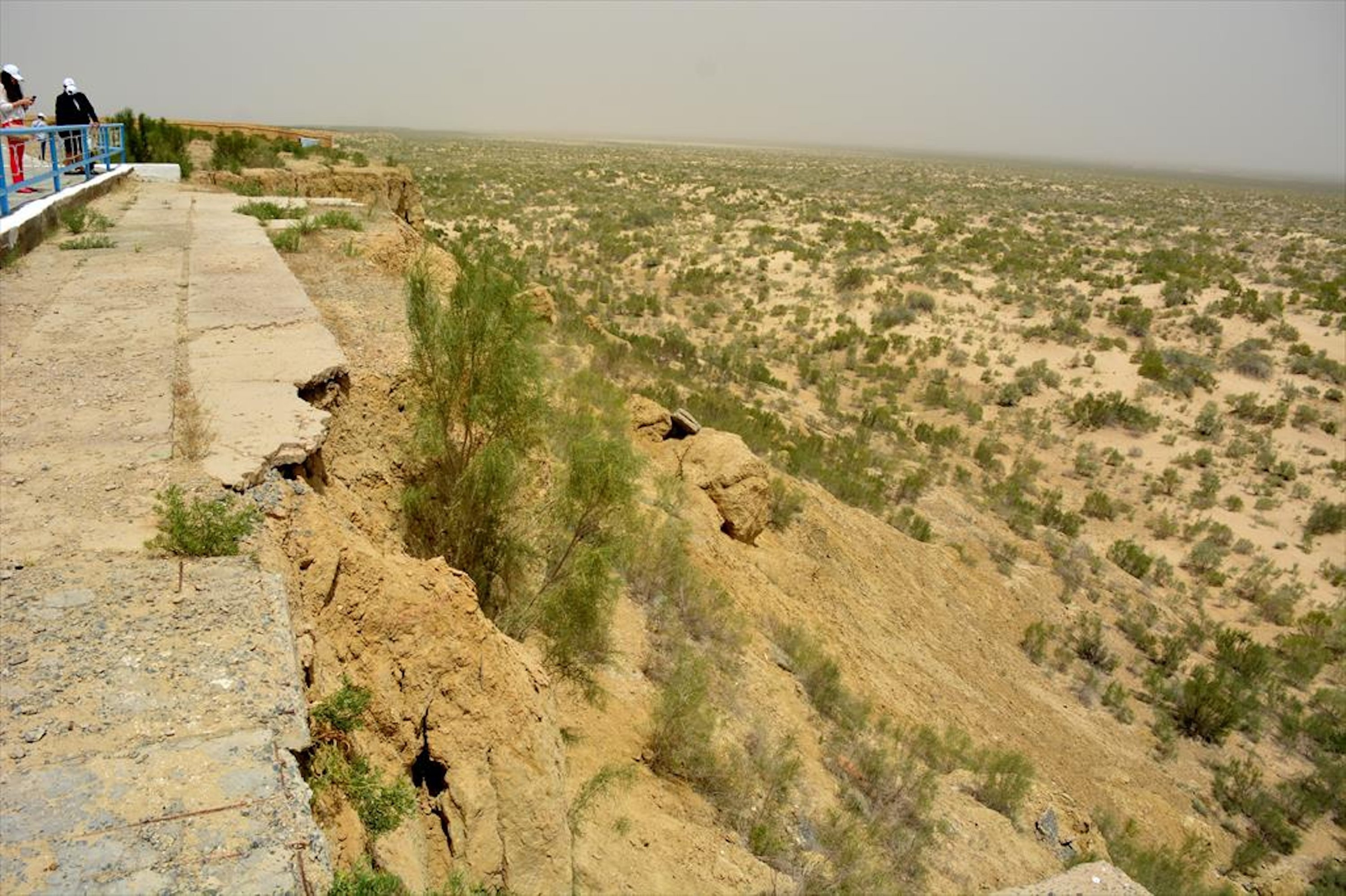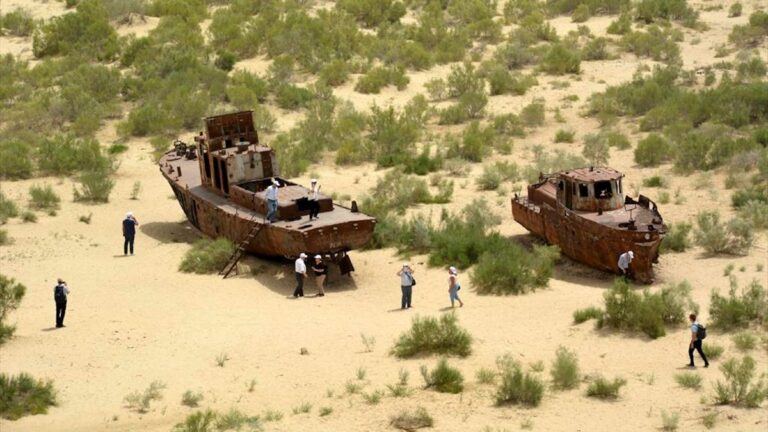In the world, the fourth largest lake in the world, the Aral Sea between Uzbekistan and Kazakhstan, has been depleted since the 1960s, causing a serious Central Asia environmental crisis.
The report created by the Anaddor Agency (AA) on the Wetland Day is entitled “Once a lake, now a desert.” Reduce disasters.
The area became a cotton production hub between 1960 and 1990 during the Soviet era. Agricultural irrigation has expanded from 4.5 million hectares to 7 million hectares, significantly increasing the demand for water, reducing the inflow from the once -supported lake and the inflow from the Amdariya River.
Prior to the 1960s, Amdariya donated 38.6 kilometers a year, and Sildaliya supplied 14.5 cubic kilometers. However, a large irrigation project caused most of the water to bypassing the cotton field, and the Aral Sea rapidly shrunk. By the beginning of the 2020s, the surface area of the lake decreased almost nine times, the water level decreased tripled, and the amount was reduced by 15 times.

In 1960, the Aral Sea reached 68,000 square kilometers, with 1,083 cubic kilometers of water. Its length was 426 km, its width 284 kilometers, and the deepest point reached 68 meters. Today, the surface of the lake has been reduced to 8,000 square kilometers, the amount of water has decreased to 75 cubic kilometers, and the maximum depth is only 20 meters. The lake continues to retreat and the annual depth loss is 80-110 cm.
The retreating water splits the lake into two, leaving the Uzbekistan, and the other is left in Kazakhstan. Approximately 300 islands that were once scattered in the lake are fused with the surrounding land.
Aralcum desert formation
With the withdrawal of the Aral Sea, the old seabed, which exceeded 4 million hectares, turned into the world’s youngest desert, the Ararkm desert. Every year, the sandstorms in Central Asia are equipped with dust containing about 100 million tons of salt, worsening environmental conditions.
Scientists have reported that traces of these dust particles have been found in the Pamir Mountains, accelerating glaciers. Lake drying increases soil erosion and air pollution, threatening human health, living conditions, and biodiversity. The environmental catastrophe has influenced the livelihood of nearly 3 million people in the basin, contributing to the increase in the SPREAD of the disease and the rise in infant mortality.
In the once -prospered port of Muinak fishery towns, a large amount of agricultural land was chlorized, and the coastline retreated more than 100 kilometers. As a result, agriculture and fisheries collapsed, forcing many residents to move for better opportunities.
Marine and wildlife loss
By the mid -20th century, the Aral Sea Basin supported more than 300 plants, 319 types, and 70 animals. Almost half of these have disappeared or migrated due to changes in the environment. The lake once contained 34 kinds of fish, with about 60,000 tons of catch a year. However, the rise in salt is now 10 times higher than the 1960s, which is almost the same as aquatic creatures.
Muinak fish can be closed and the fishing boats have been abandoned. Now, it is scattered on the dry sea floor and is a graveyard of a rusted container. On the other hand, the camel walks around the newly formed desert.
Former Vizlos Denya Island, which had a biological weapon test between 1954 and 1990, merged with the mainland to contract the lake.
Efforts to reduce crisis
It is estimated that the annual economic loss is estimated by the drying of the Aral Sea. The local government has launched a transplanted project on the exposed sea with the aim of stabilizing soil and reducing dust storms.
Uzbekistan has planted strong species in deserts such as Saxal and Tamariisk, and strengthened the efforts of planting. In 2017, the authorities started the “Green Belt” project, covering the 70 -kilometer dry bottom of vegetation, vegetation and dust. The government aims to rewrite the dry part of the Aral Sea within 10 years.
According to Zafar Eshankulov, a staff member of the Dry Lake, a dried lake bottom of the 3.2 million hectares belonging to Uzbekistan, it has already been re -planted, according to Zafar Eshankulov, a staff member of the climate change. He emphasized that these efforts have greatly reduced the spread of air dust and improved local environmental conditions.
The Aral Sea crisis is one of the most amazing ecological disasters in the world, and continuous efforts to relieve its impact provide a faint hope for the future.



